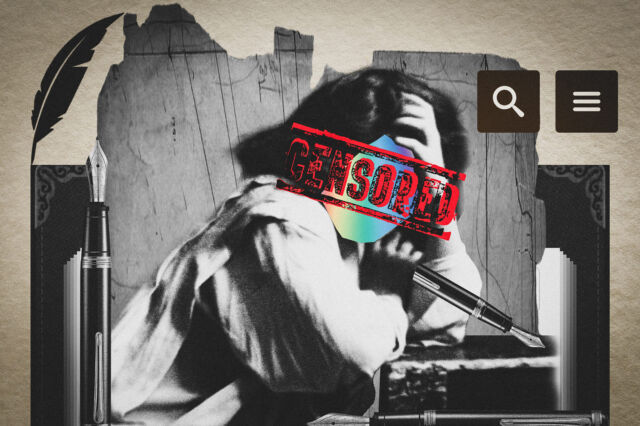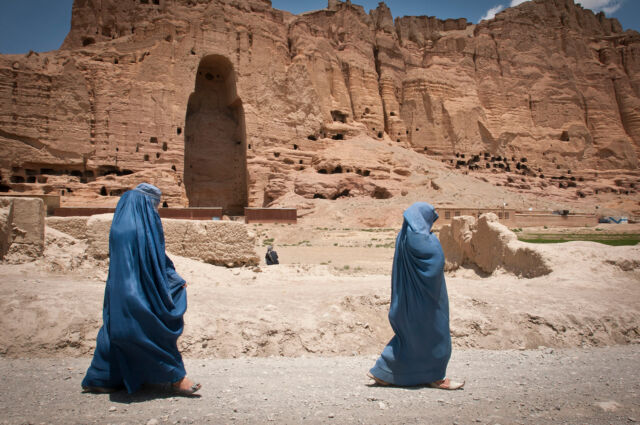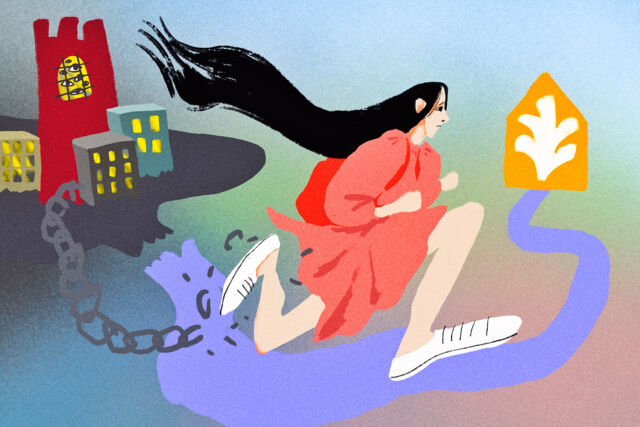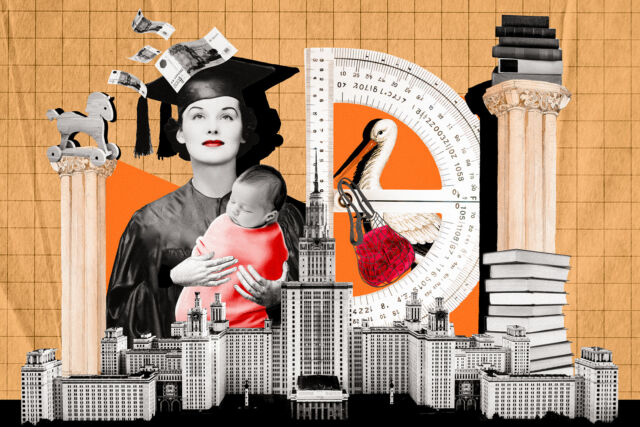In September a 22-year-old Iranian woman named Mahsa Amini was horribly murdered, actually, beaten to death in Tehran downtown for not wearing a hijab properly. This cruel execution carried out by the «morality police» caused outrage not only in Iran, but throughout the world.
The death of the girl was first reported by a journalist and activist Niloufar Hamdi, who personally visited the hospital morgue and documented the murder. Thanks to Niloufar the world knew the story of Mahsa. Soon after that the journalist was arrested, and there is still no news about her.
The courage of these two Iranian women of Kurdish origin triggered a real revolution, a civil wave, a civil forest fire, which is, probably, going to demolish the regime of the mullahs in Iran.
Thousands of young women took to the streets of Iranian cities, taking off their hijabs and cutting their hair in public in solidarity with the murdered young woman and in protest against the way that women and in general all people have to live in Iran. Together with women courageous young men took to the streets too. The people confront the regime’s army, the so-called Islamic Revolutionary Guard Corps, by blocking highways and seizing administration buildings. The number of casualties exceeds hundreds, because the authorities in desperate attempts to survive use military weapons against the civilians.
This is what a society looks like when it is fed up with the discrimination and tyranny of the regime that has suppressed civil and ordinary people’s freedoms for more than 40 years,
since Ayatollah Ruhollah Khomeini came to power in 1979 deposing Shah Mohammed Reza Pahlavi.
It is interesting that in 1979 during the Islamic revolution, the Iranian people also rebelled against injustice and inequality. Iranian women were also in the streets and those who wore trousers and short hair fought for the right of their fellow citizens to wear hijabs. They insisted that only a woman should choose what she can wear, an Islamic headscarf or a miniskirt, and a man cannot make the choice for her.
Miniskirt in Iran is a worldwide meme now. It seems that everyone knows that relatively not so long ago in Iran the women were more “open”, they wore miniskirts, not hijabs. From time to time some Internet sites publish photos of those years, which by no means fit in with the image of the Islamic republic nowadays. But where did it all go?
Generation unfamiliar with hijab
A decree banning the wearing of hijabs (and some other elements of traditional dress, both female and male) was issued in 1936 by Shah Reza Pahlavi (the father of Mohammed Reza Pahlavi). Iran at that time was a poor agrarian society with a minimal education system. And Shah who received European education and was oriented to the Western way of life and thinking was obsessed with the idea of «women’s liberation» and their greater inclusion in the social life of Iran.
When issuing his decree, the shah was inspired by the successful experience of emancipation process in Turkey, however, the situation in Iranian society was different, and the ban on wearing traditional clothes became a tragedy for the country.
The police furiously persecuted those who did not want to comply with the Shah’s decree, and women wearing “closed” dresses were forcibly undressed in the streets, beaten and thrown into prison.
Many found themselves, actually under house arrest for an uncertain period of time, simply because of not having enough courage to go out without a hijab.
In 1941 during the Second World War, Shah Reza Pahlavi became entangled in geopolitical complications and voluntarily abdicated in favor of his son, Mohammed Reza. The new Iranian Shah was only 21 years old. He received an excellent education in Switzerland and just like his father had a long experience of living in Europe.
At the end of the war after the country had been through a period of political turbulence, the young Shah Pahlavi continued his father’s policy, which by the early sixties he developed into the so-called “white revolution” — a set of measures that were meant to turn Iran into one of the most prosperous economies in the world, «Middle Eastern Japan».
The new shah started implementing his plans in various directions: accelerated industrialization, reformation of the army, reforms in agriculture and, of course, the Europeanization of social relations through affordable education (moreover, for the best students and at European universities free of charge), greater participation of women in social and political process.
The “White Revolution” proclaimed by Mohammed Reza Pahlavi laid on the ground fertilized by two decades of the hijab ban. It’s not that society had reconciled itself, it’s just that a whole generation had grown up not knowing the hijab and calmly accepted the idea of not wearing it. These were the years that gave the world hundreds of bright shots of Persian beauties in miniskirts with deep cleavage, in playful pin-up style clothes.
Freedom through violence
Despite all the external signs, Iran has never approached the ideals and values of the Western world, and only because of the Shah’s fault. Offering democratic solutions that were alien to Iranian society, he himself remained to be a product of this society. Shah was spreading freedom through violence. The Iranian secret police was working day and night, the prisons were overflowing with political prisoners.
The shah promoted conspicuous and even depraved consumption in contrast to the poverty of the population. There is a well-known story about how Mohammed Reza Pahlavi organized a pompous celebration of the 2500th anniversary of the Persian Empire. During three days in October 1971 the kings, presidents and sheikhs from all over the world feasted among the ruins of ancient Persepolis. The event was meant to emphasize that the Pahlavi era became «a period of renaissance of Iranian civilization».


Some 50 luxury tents for distinguished guests were designed by French architects and designers, 37 kilometers of the finest silk (and a year of work) were spent on the construction of the tent village. An airport was built next to the venue, as well as a thousand-kilometer-long highway to Tehran. Thousands of trees were planted around the ancient ruins, a whole forest. About 50,000 songbirds were brought there from Europe (as you can imagine, during these three days they all died in a desert climate where at noon the temperature rises above 40 degrees Celsius, and at night drops to zero).
Louis Vaudeble, then the owner of the most famous restaurant in the world, Maxim’s, was in charge of the culinary part of the event. All the ingredients for the dishes had been brought from Paris, even herbs, and only 150 kilograms of exquisite black caviar served at the feast were actually of Iranian origin. Later, in an interview, Monsieur Vaudeble said that «in the history of mankind there has never been such an extravagant party like this.» The table for guests of honor was 70-meters-long, and some125 women had spent six months embroidering the tablecloth designed for the table.
Three days of the celebration cost the Iranian budget about 300 million British pounds. The country where millions of citizens were actually in a disaster as a result of inept reforms, the nation whose children were dying of starvation perceived this event very painfully.
In early 1979 the «white revolution» in Iran ended, it was swept away by another, the Islamic revolution. The people who lead the new revolution stuck to absalutly different ideas than Shah Pahlavi. Those were men advocating fundamental Islamic values.
Iranian society, which put an equal sign between European values and depravity, considered poverty and humiliation as an indispensable consequence of enlightenment, eagerly stood up in defense of this new revolution.
The shah had fled, and the citizens of Iran turned their eyes towards another idol — the spiritual leader Ayatollah Khomeini.
The hijab at first only «permitted» was gradually becoming more and more preferable in public places, until it became completely «obligatory». While miniskirts and pants for women have gone just the other way round from acceptable to unwelcome, and finally outlawed.
Scheherazade is tired
A little more than 40 years have passed, and the daughters and granddaughters of the women who overthrew Shah Pahlavi again take to the streets. Today the women of Iran make a claim for their inalienable right, their right to be free. They oppose cynical patriarchy. They oppose the regime that though gave them the right to drive a car, or carry a Kalashnikov assault rifle, but not the right to let their hair to be visible. It’s a reasonable question, why? Any connoisseur of Islam will easily answer this question, it’s because women’s hair is an instrument of seduction, an erotic appeal that a man cannot resist. That is why the sex obsessed men of the Iranian religious regime obligated the women of their country to wrap themselves in black from head to toe.
This was done by the same men who legally approve the use of women as objects of sexual gratification in the so-called “marriages of pleasure” that exist in Iran until these days. That kind of contract with a limited period of validity, in fact, means a payment (money or jewelry) that a woman receives for a partnership. During a specified period of time a man in this marriage may have sex with a woman, and if he dies before the contract expires, the woman cannot inherit anything from him, and she is not entitled to alimony at the end of the contract. Even children must stay with the husband who paid for the «marriage of pleasure.»
If a man wants to take an underage girl for a “pleasure marriage”, he according to Sharia must obtain the consent of her father
(or brother, in the absence of a father). This type of marriage was known in the Arab world even before the time of the prophet, but with the advent of Islam, it was preserved only among Shiite Muslims, which include the vast majority (more than 90%) of the population in Iran.
This is just one example of the hypocrisy of the religious Iranian regime, which considers what happened to Mahsa Amini to be the norm.
In the Western world when talking about Iran, it is commom to use cliches like “the country turned back to the Middle Ages”, but this is not entirely true, because it was the Middle Ages and even the “dark times of the world” that were the era of enlightenment for Persia, Mesopotamia and the whole Middle East. Women have played a brilliant role in the progress in the homeland of civilization. Spoken and written records of Persian culture contain many stories of smart intelligent women and tyrannical, bloodthirsty men in power.
The most famous among these women is Scheherazade, a beauty who escapes death from the cruel Shah Shahriyar by telling him an endless story during 1,001 nights. In fact, the world-famous tales of «A Thousand and One Nights» was the first soap opera ever. They are of course fictional stories and have little connection with reality, however, the manners and characters described in them are an exact replica of those times. A strong and intelligent woman who easily fools a self-confident shah was the heroine of the epic of that time.
Another heroine of ancient Persian lore, Panthea Arteshbod is described as the most beautiful and confident female warrior in all of Asia. Legend has it that during the battles she was forced to wear a fearsome battle mask to protect her face, as well as to prevent her male comrades from falling in love with her and losing their heads. A female warrior is not an object of admiration and sighing, not an addressee of chivalric ballads and not a spectator of fights, but an active figure in military politics equal to a man. The attitude that is not particularly European, is it?
Panthea Arteshbod commanded an elite «immortal» squad of Persian soldiers who formed the core of the army of the Achaemenid Empire in the sixth century BC. During the war these soldiers fought, and in peacetime they played the role of a civil guard guarding the domestic peace of the empire. The detachment had the name «immortal» because its strength was always maintained at the level of 10 thousand people, each killed or seriously wounded warrior was immediately replaced. Not everyone could become one of those 10 thousand, the training was very strict and difficult, both physically and psychologically. One of the main functions of the commander of the detachment was to maintain the loyalty and combat effectiveness of this indestructible military machine.
However, it is worth saying that Middle Eastern legends pay attention to other purely physical feminine characteristics. And this is not only fairy tales about beautiful concubines, one can read how the Quran describes houris, those heavenly virgins who meet the righteous in paradise. People who sing of the war still encourage young Muslim fighters by meeting with the houris after death.
The history of the world, including the Middle Eastern world, is full of tales about free, courageous women. It would be a mistake to think that the role of a woman in the East was limited to the position of a concubine, who was called upon to please her master. And the women, who today tear off their headscarves in the streets of various Iranian cities in memory of Mahsa Amini, are those who inherit from Scheherazade and Panthea Arteshbod. The women of Iran have rebelled today because they are tired of entertaining Shahriyar and because they refuse to be a comfort prize for soldiers.
As the old Persian proverb has it, “One spark is enough to burn a hundred worlds”.







